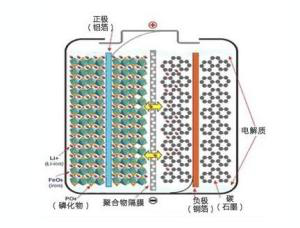
working principle:
The full name of lithium iron phosphate battery is lithium iron phosphate lithium ion battery, the name is too long, referred to as lithium iron phosphate battery. Because its performance is particularly suitable for power applications, the word "power" is added to the name, namely lithium iron phosphate power battery. Some people call it "LiFe iron (LiFe) power battery."
significance:
In the metal trading market, cobalt (Co) is the most expensive, and the storage amount is small. Nickel (Ni) and manganese (Mn) are cheaper, and iron (Fe) is the cheapest. The price of the cathode material is also consistent with the price of these metals. Therefore, a lithium ion battery made of a LiFePO4 positive electrode material should be the cheapest. Another feature of it is that it is environmentally friendly.
The requirements for rechargeable batteries are: high capacity, high output voltage, good charge and discharge cycle performance, stable output voltage, high current charge and discharge, electrochemical stability, and safety during use (no overcharge, overdischarge, and short circuit) Such as improper operation caused by burning or explosion), wide operating temperature range, non-toxic or less toxic, no pollution to the environment. Lithium iron phosphate battery using LiFePO4 as positive electrode has good performance requirements, especially in large discharge rate discharge (5~10C discharge), stable discharge voltage, safety (no combustion, no explosion), and life (cycle number) ), it is the best for the environment, it is the best high current output power battery.
Structure and working principle:
The internal structure of the LiFePO4 battery is shown in the figure.
On the left is an olivine-structured lithium iron phosphate battery LiFePO4 as the positive electrode of the battery. The aluminum foil is connected to the positive electrode of the battery. The middle is a polymer separator. It separates the positive electrode from the negative electrode, but the lithium ion Li+ can pass and the electron e- cannot pass. On the right is a battery negative electrode composed of carbon (graphite), which is connected by a copper foil to the negative electrode of the battery. Between the upper and lower ends of the battery is the electrolyte of the battery, and the battery is hermetically sealed by a metal casing.
When the LiFePO4 battery is charged, the lithium ion Li+ in the positive electrode migrates toward the negative electrode through the polymer separator; during the discharge, the lithium ion Li+ in the negative electrode migrates toward the positive electrode through the separator. Lithium-ion batteries are named after the lithium ions migrate back and forth during charging and discharging.
Main performance:
The performance of lithium-ion battery is mainly determined by the positive and negative materials. Lithium iron phosphate as a lithium battery material has only appeared in recent years. The domestic development of large-capacity lithium iron phosphate battery was July 2005. Its safety performance and cycle life are incomparable to other materials, which are the most important technical indicators of power batteries. 1C charge and discharge cycle life of 2000 times. Single cell battery overcharge voltage 30V does not burn, puncture does not explode. Lithium iron phosphate cathode materials make large-capacity lithium-ion batteries easier to use in series. To meet the needs of electric vehicles for frequent charging and discharging. It has the advantages of non-toxic, non-polluting, good safety performance, wide source of raw materials, low price and long service life. It is an ideal cathode material for a new generation of lithium ion batteries.
This project belongs to the development of functional energy materials in high-tech projects, and is the key area supported by the national “863” plan, “973” plan and “Eleventh Five-Year” high-tech industry development plan.
The positive electrode of lithium-ion battery is lithium iron phosphate material, which has great advantages in safety performance and cycle life. These are one of the most important technical indicators of power battery. 1C charging and discharging cycle life can be achieved 2000 times, the puncture does not explode, it is not easy to burn and explode when overcharged. Lithium iron phosphate cathode materials make large-capacity lithium-ion batteries easier to use in series.